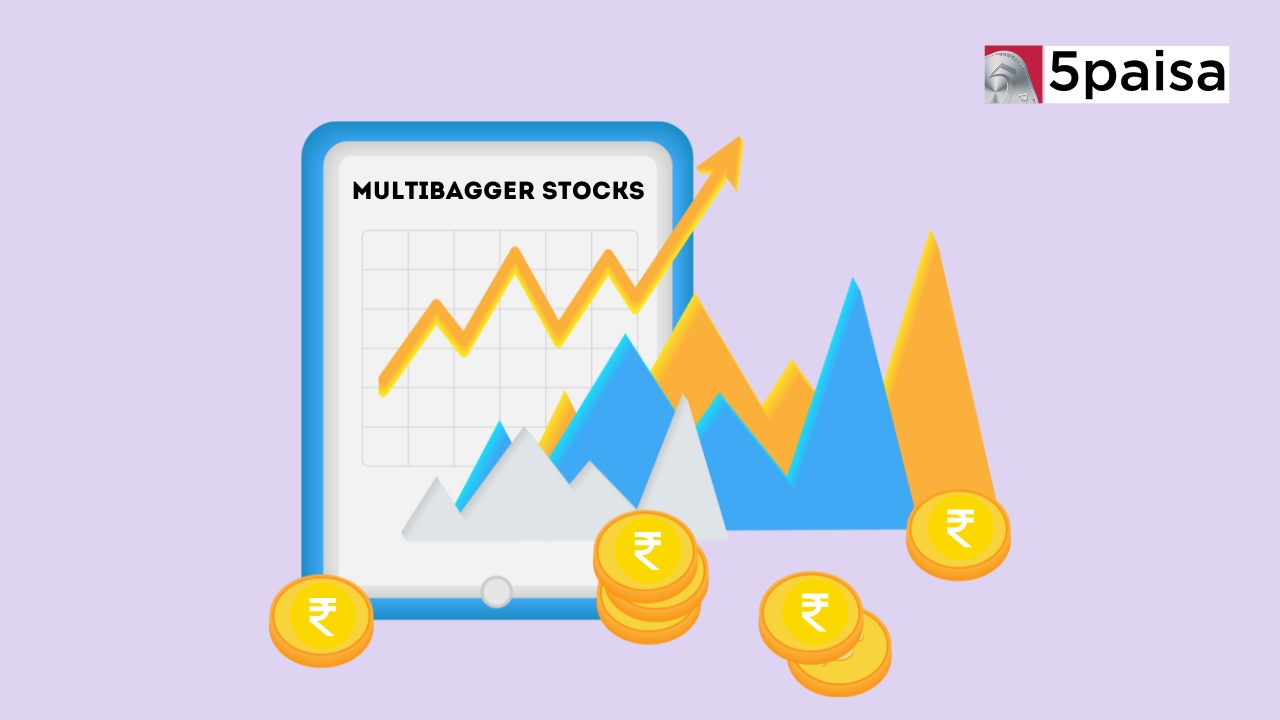Intraday in Stocks vs 24x7 Crypto Trading: Which Actually Works for Retail Investors?
How to Identify Multibagger Stocks

Turn Small Investments into Monumental Gains—Learn the Art of Spotting Multibagger Stocks Today!
Have you ever wondered how some investors turn small investments into massive fortunes? What if you could identify stocks that multiply your money several times over? Sounds exciting, right? These are multi-bagger stocks, the key to exponential wealth creation.
According to a recent article by the Economic Times, 15 multibagger stocks delivered up to 84,000% returns, turning an investment of ₹1 lakh into at least ₹50 lakhs in just three years. Imagine the wealth that could be created with such returns! This is the kind of potential multibagger stocks offer, turning small investments into extraordinary fortunes.
But finding multi-bagger stocks isn’t easy. How do you uncover these hidden gems among thousands of stocks? What traits set them apart? And, most importantly, how can you position yourself to benefit from their growth?
This blog will simplify how to find multibagger stocks and provide actionable tips to identify such stocks.
What Are Multibagger Stocks?
A multibagger stock delivers returns several times its original purchase price, making it essential for investors looking to earn substantial returns. These stocks have the potential to transform portfolios significantly and create long-term wealth.
Think about companies like Infosys or Titan. These businesses, during their early days, had strong fundamentals and consistent growth. They eventually became multibagger stocks, rewarding investors who spotted them early. Learning how to pick multibagger stocks like these can help you achieve similar success.
Why Invest in Multibagger Stocks?
Here are three key reasons to invest in these unique stocks:
- Wealth Creation: Multibagger stocks can multiply your initial investment many times over, generating substantial wealth.
- Diversification: These stocks add high-growth potential to a stable portfolio, balancing risk and reward.
- Early Entry Advantage: Getting in early lets you harness the power of compounding, amplifying returns over time.
Understanding how to find multibagger stocks ensures you are well-prepared to tap into these opportunities.
1. How to Spot a Multibagger Stock: Traits to Look For
Spotting a multibagger stock involves looking for specific traits. Here’s what you need to focus on:
A. Strong Fundamentals
- Look for companies with consistent revenue and profit growth over multiple years.
- Low debt-to-equity ratios indicate financial stability.
- A high return on equity (ROE) shows efficient capital use.
Example: A company growing its profits by 20–30% annually is a strong candidate for becoming a multibagger stock.
B. Industry Trends
- Target sectors with high growth potential, such as technology, renewable energy, and healthcare.
- Look for companies that are leaders or innovators in their niche.
Example: Companies producing EV batteries have become multibagger stocks thanks to the electric vehicle boom.
C. Management Quality
- Strong leadership ensures consistent performance and ethical practices.
- Transparent governance builds investor trust.
D. Undervalued Stocks
- Multibagger stocks are often undervalued because the market has not recognized their full potential.
- Use valuation metrics like the P/E ratio and PEG ratio to assess opportunities.
Spotting these traits is essential when learning how to pick multibagger stocks effectively.
Finding multibagger stocks isn’t just about luck—it’s about strategy, research, and patience. With the right approach and tools, you can identify opportunities that redefine your financial future.
2. How to Pick Multibagger Stocks: Actionable Steps
Identifying and investing in multibagger stocks requires a step-by-step approach. Here’s how:
A. Start with Research
- Use stock screeners on platforms like 5paisa to filter stocks by financial performance, growth rates, and valuation metrics.
- Analyze quarterly and annual reports to understand the company’s fundamentals.
B. Follow Market Trends
- Stay informed about economic developments and government initiatives that influence industries.
- Focus on sectors benefiting from incentives, such as the “Make in India” program for manufacturing.
C. Be Patient
- Multibagger stocks require time to grow—think in terms of years, not months.
- Avoid panic selling during short-term market fluctuations.
D. Diversify Strategically
- Build a portfolio of 10–15 stocks across different sectors to balance risk and return.
- Avoid over-diversification, which can dilute potential gains.
Following these steps ensures you understand how to pick multibagger stocks while minimizing risks.
Also Read: Expiry Day Trading
3. Tools to Find Multibagger Stocks with 5paisa
Navigating the stock market is easier with tools designed for identifying high-potential investments. Here’s how 5paisa can assist:
- Stock Screeners: Find undervalued and high-growth stocks.
- Research Reports: Get detailed analyses of companies likely to become multibagger stocks.
- Expert Recommendations: Leverage curated picks from seasoned experts.
- Portfolio Analytics: Track your investments for better returns.
4. Common Mistakes to Avoid
Even experienced investors make mistakes when looking for multibagger stocks. Avoid these pitfalls:
- Chasing Trends Blindly: Verify the fundamentals before investing.
- Ignoring Risks: Assess potential risks before committing.
- Frequent Trading: Minimize buying and selling to maximize profits.
5. How to Find Multibagger Stocks in Growing Markets
The key to finding multibagger stocks lies in spotting growth markets before they take off. Here’s how you can target potential multi-baggers in emerging sectors:
A. Look for Market Disruptors
Some of the best multibagger stocks come from companies that disrupt existing industries. These companies challenge the status quo and capture significant market share.
Example: Look at the rise of fintech companies, which are transforming traditional banking systems.
B. Follow the Money
Track where investors and institutions are putting their money. When big players back a company, it often signals strong growth potential.
C. Analyze International Trends
Sometimes, the best multibagger stocks come from industries in other countries. Global trends like clean energy, digital transformation, and biotechnology are good places to look for high-growth opportunities.
By targeting these areas, you’ll enhance your ability to identify multibagger stocks.
6. Real-Life Example: A Multibagger Success Story
Eicher Motors, the parent company of Royal Enfield, traded at ₹1,000 in 2010. By 2020, it had soared to ₹20,000, delivering a 20x return in a decade! Investors who stayed invested saw their wealth multiply significantly.
Understanding how to find multibagger stocks like Eicher Motors can help you achieve similar success
!
Final Thoughts
Finding multibagger stocks is about recognizing potential, understanding market trends, and having access to the right tools.
It requires a keen eye for detail, a solid understanding of market dynamics, and the patience to let your investments grow. By focusing on strong fundamentals, promising sectors, quality management, and undervalued opportunities, you position yourself for potentially life-changing returns.
That said, every investor’s journey is unique. Your goals, risk tolerance, and investment horizon will play a significant role in shaping your strategy.
Armed with the right knowledge and tools, you can embark on this journey confidently and aim to transform your financial future.
Your next big opportunity might be just a few steps away.
Frequently Asked Questions
What are multibagger stocks?
How are multi-bagger stocks identified?
What factors contribute to a stock becoming a multi-bagger?
Is it necessary to hold multi-bagger stocks for a long time?
- Flat ₹20 Brokerage
- Next-gen Trading
- Advanced Charting
- Actionable Ideas
Trending on 5paisa
Indian Stock Market Related Articles
Disclaimer: Investment in securities market are subject to market risks, read all the related documents carefully before investing. For detailed disclaimer please Click here.

 5paisa Research Team
5paisa Research Team
 5paisa Research Team
5paisa Research Team
 Sachin Gupta
Sachin Gupta




